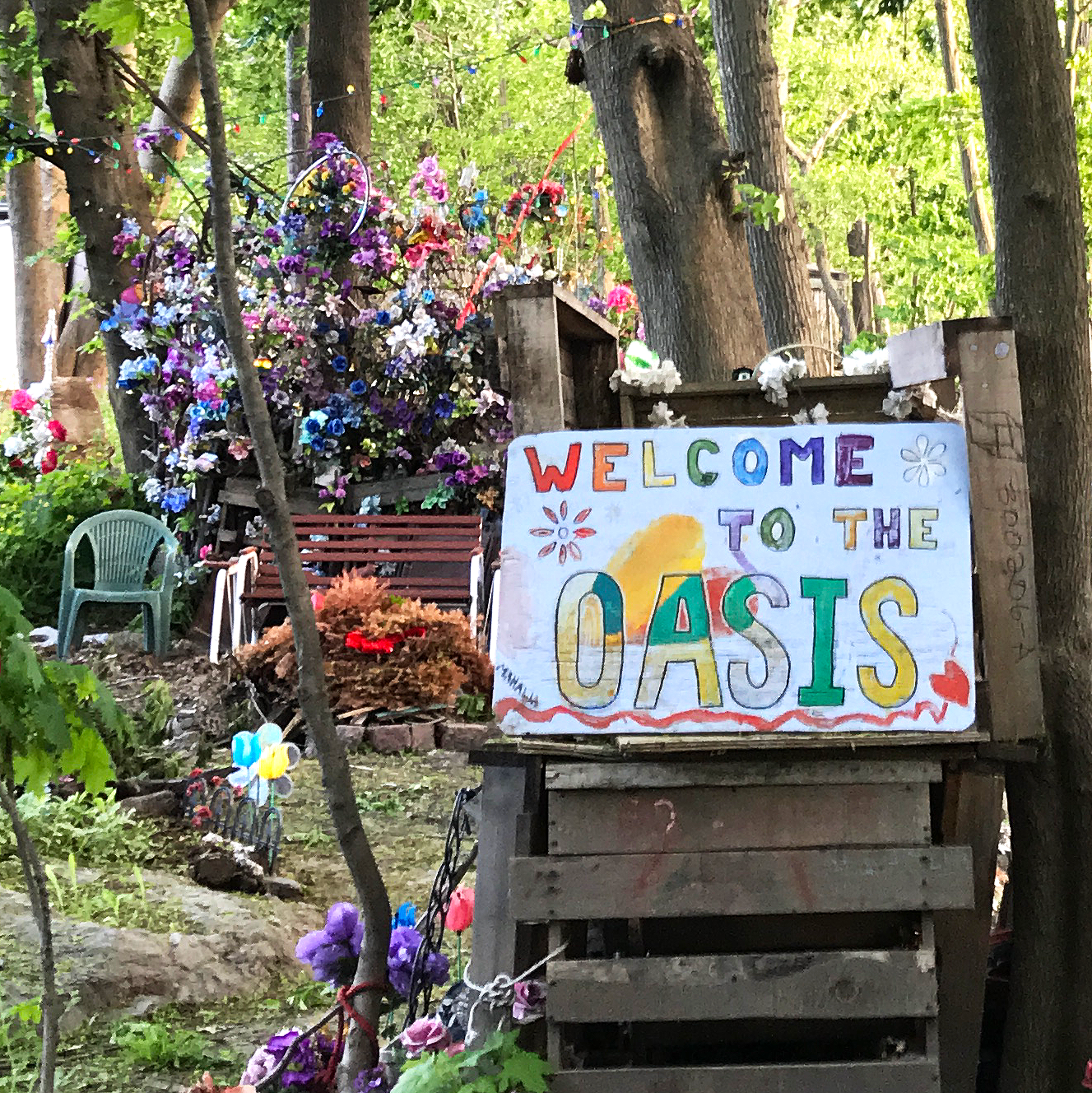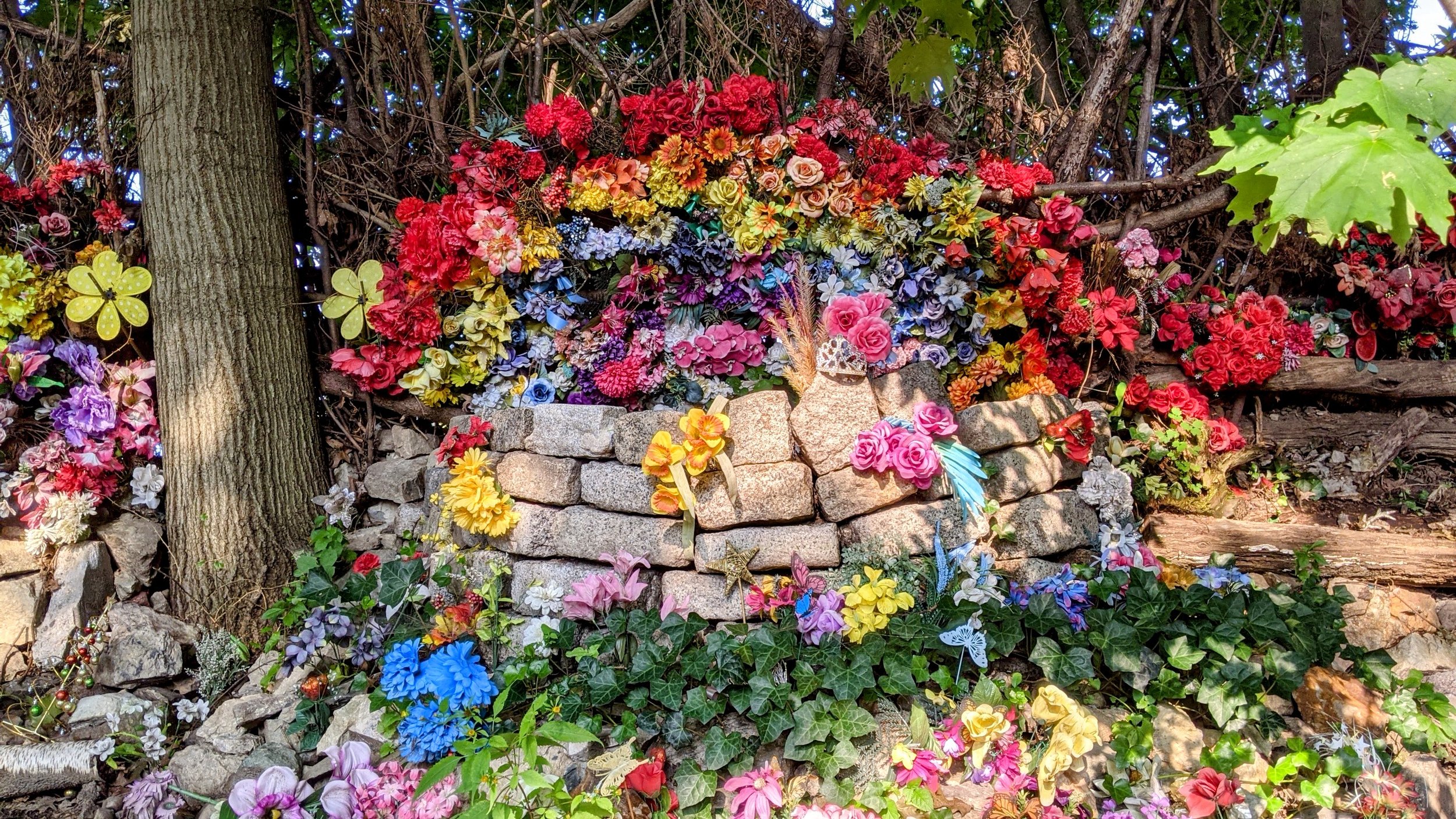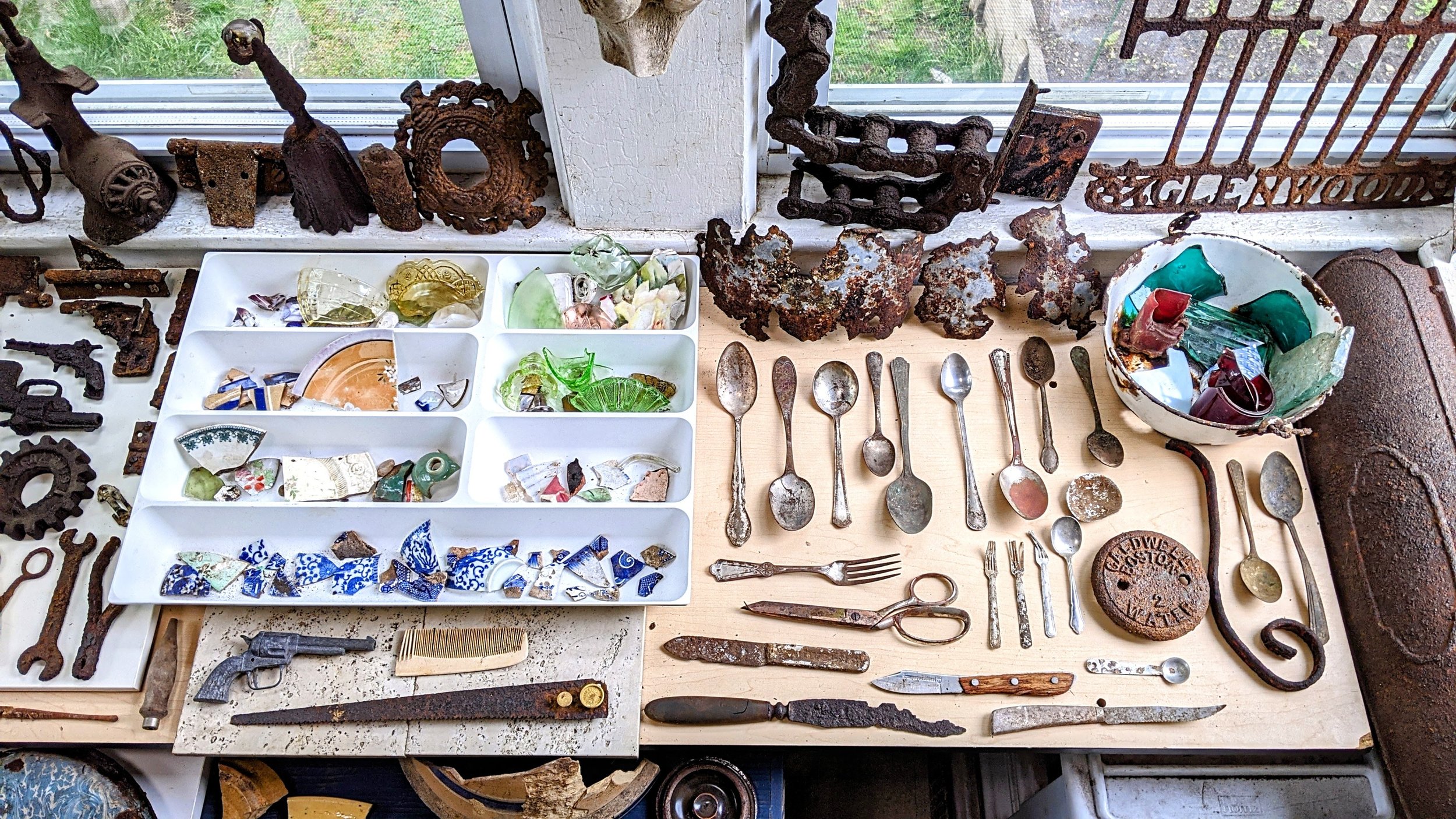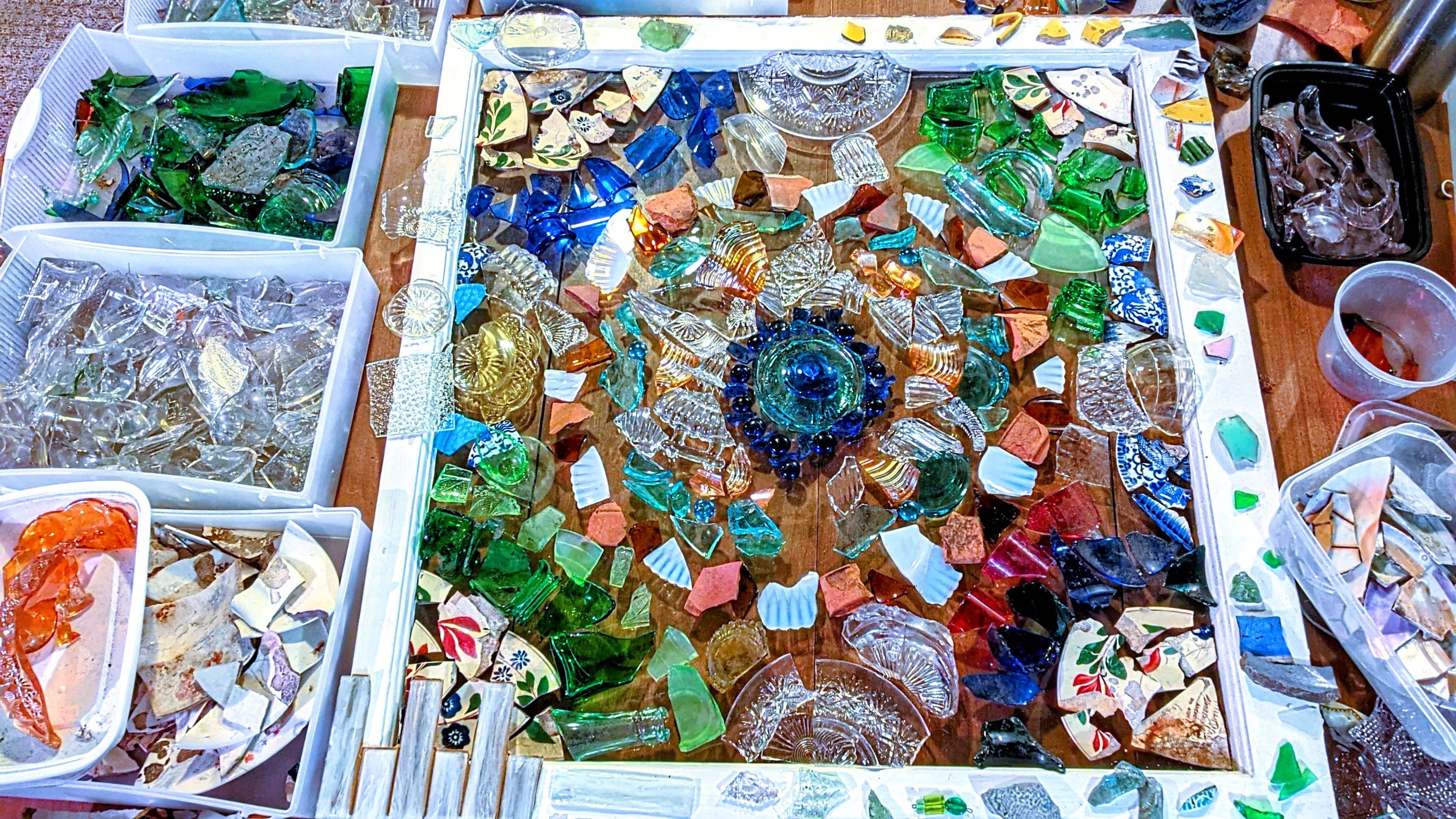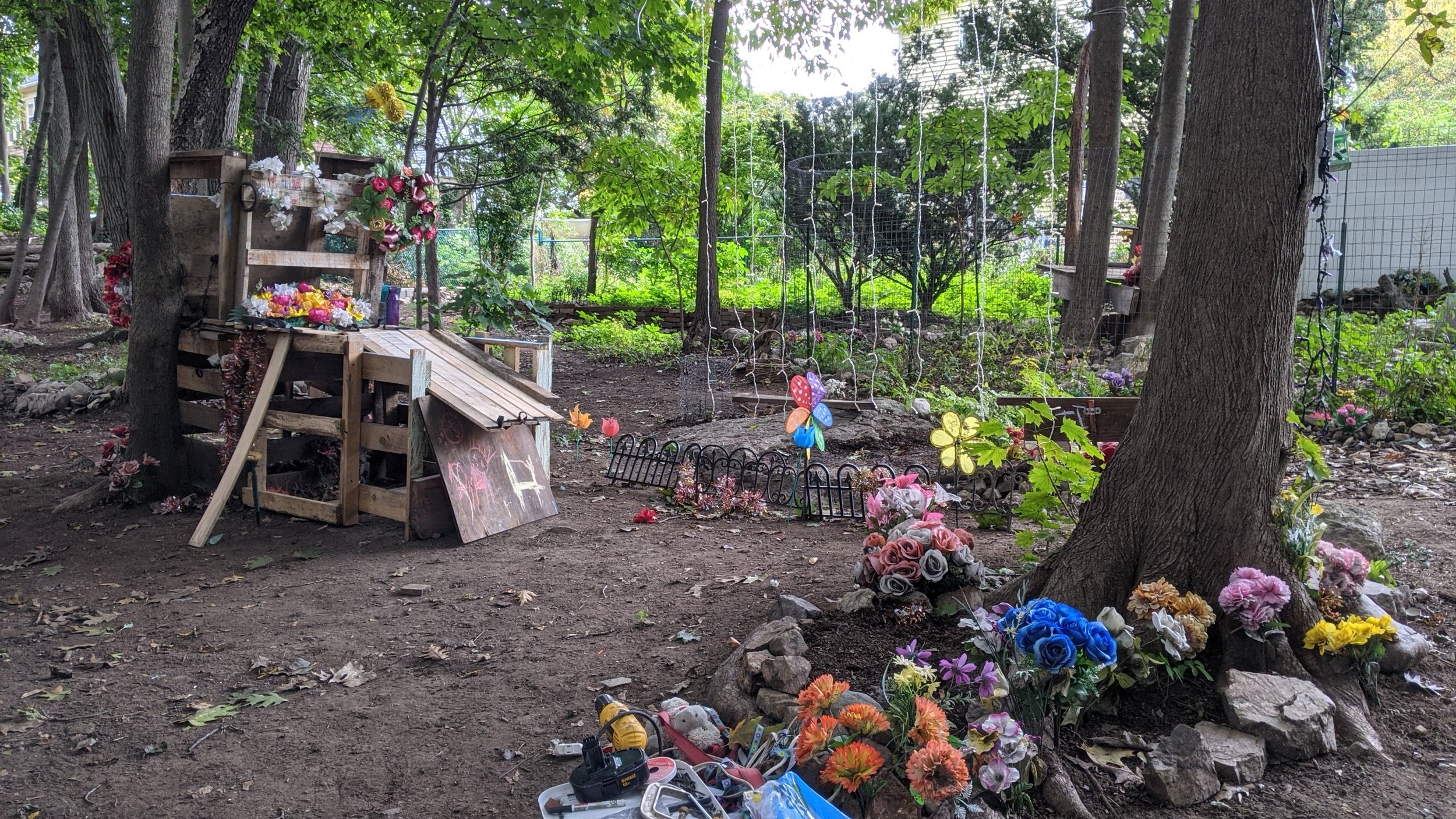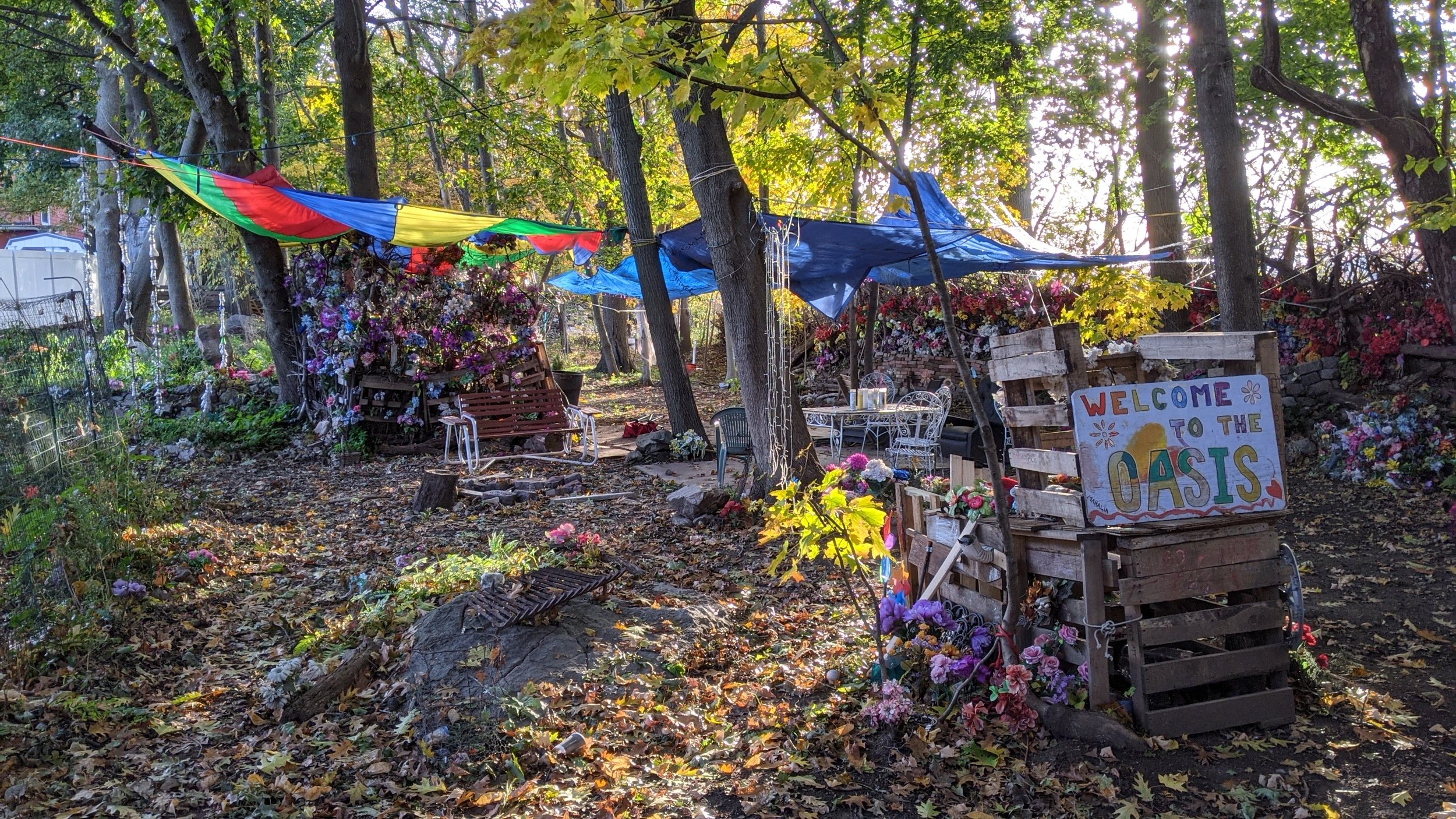Making Oasis
Summer 2022 Youth Artist Project with Artist-in-Residence Joseph Madres
July 18 - August 24 | Mondays & Wednesdays, 2-6:00PM
Hyde Park, Boston, MA
Community Celebration: August 18, 6-8PM – RSVP
How can placemaking help to democratize the places in which we live?
“Making Oasis” is a Youth Artist Project with Artist-in-Residence Joseph Madres exploring installation art, land art, placemaking, natural ecosystems, and community activism.
Youth Artists will work together to transform a neglected green space in Hyde Park into a place that opens new creative possibilities for the local community and ecosystem. We will collaborate to build site-specific art installations including mosaics, mobiles, found object and mixed media sculpture, and land art. Together will explore the relationships between different parts of a place—people, other lifeforms, ecosystems, objects and materials, stories, laws, cultural traditions, climate, and more—investigating how humans can influence a place, and how a place can influence us. In making our “oasis,” together we will make a lasting, positive impact on a local neighborhood and its ecosystem!
Map of the Oasis
Map by Youth Artist Agatha D.
Photos courtesy Joseph Madres
About the Oasis
Places are continuously being made, altered, performed, and transformed. The Oasis - unceded land of the Neponset Band of the Massachusett Tribe - is a place that has experienced profound ecological violence since colonization. In the late 1800s, it was part of a rock quarry that was abandoned in the 1930s. A few decades later, the quarry became a landfill and the surrounding area, including what is now the Oasis, became an illegal dumping ground. Soon after the pandemic, local resident and artist Joe Madres began caring for this area of land and developing a deepening relationship with it. He removed hundreds of pounds of discarded material from the ground, removed ‘invasive’ plant species that were harming biodiversity, and supported the local ecosystem to recover in various ways. The Oasis also became a safe place for friends and neighbors to gather, celebrate, make art, and support each other during the worst of the pandemic. It glowed with potential for a collaborative placemaking project.
About the Making Oasis project:
In placemaking, artists intentionally seek to transform places and create conditions that encourage others to engage with places in particular ways, and based on certain principles. Making Oasis was designed as a practice in ‘ecosophical placemaking’ and an experiment in ‘natural democracy’. Both of these concepts are rooted in Indigenous scholarship and ways of being that have existed for millenia. In short, ecosophy is the practice of developing ecological wisdom through intimate experiences, prolonged relationships, and sensitive attunement with land and within our natural systems and communities. As placemakers gradually grow more attuned and attentive to our places in this way, we are able to make more ecologically considerate and wiser creative choices. Placemaking becomes an experiment in natural democracy when we acknowledge and attempt to balance the needs, interests, and rights of all members of a natural community, not just those of people, in our decision-making and actions. In Making Oasis, we ‘Oasians’ discovered how challenging this can be. We reflected on the ways in which we fell short of this ideal, while also cultivating our attunement, respect, and responsiveness in important ways.
In the Making Oasis project, we approached placemaking as ‘artivism’ - making art as a form of local activism to provoke new and more reciprocally beneficial ways of perceiving and engaging with a place. Our work intends to directly transform the relationships between people, other lifeforms, materials, space, and other ‘place parts’. To do this, our team of youth and professional artists sought to provoke new ways of experiencing and understanding materials that were once discarded as trash, and in a place that was once treated primarily as a dump. Almost all the material used to create the work in this project was removed from the ground in this place or salvaged from a nearby dumpster. We also aimed to transform the ways we think about and relate to places in general, including the materials we often take for granted and the natural communities we often carelessly damage. Ultimately, Making Oasis explores how we might all practice placemaking that imagines and realizes better ways to live among our natural communities towards sustainable and thriving futures.

